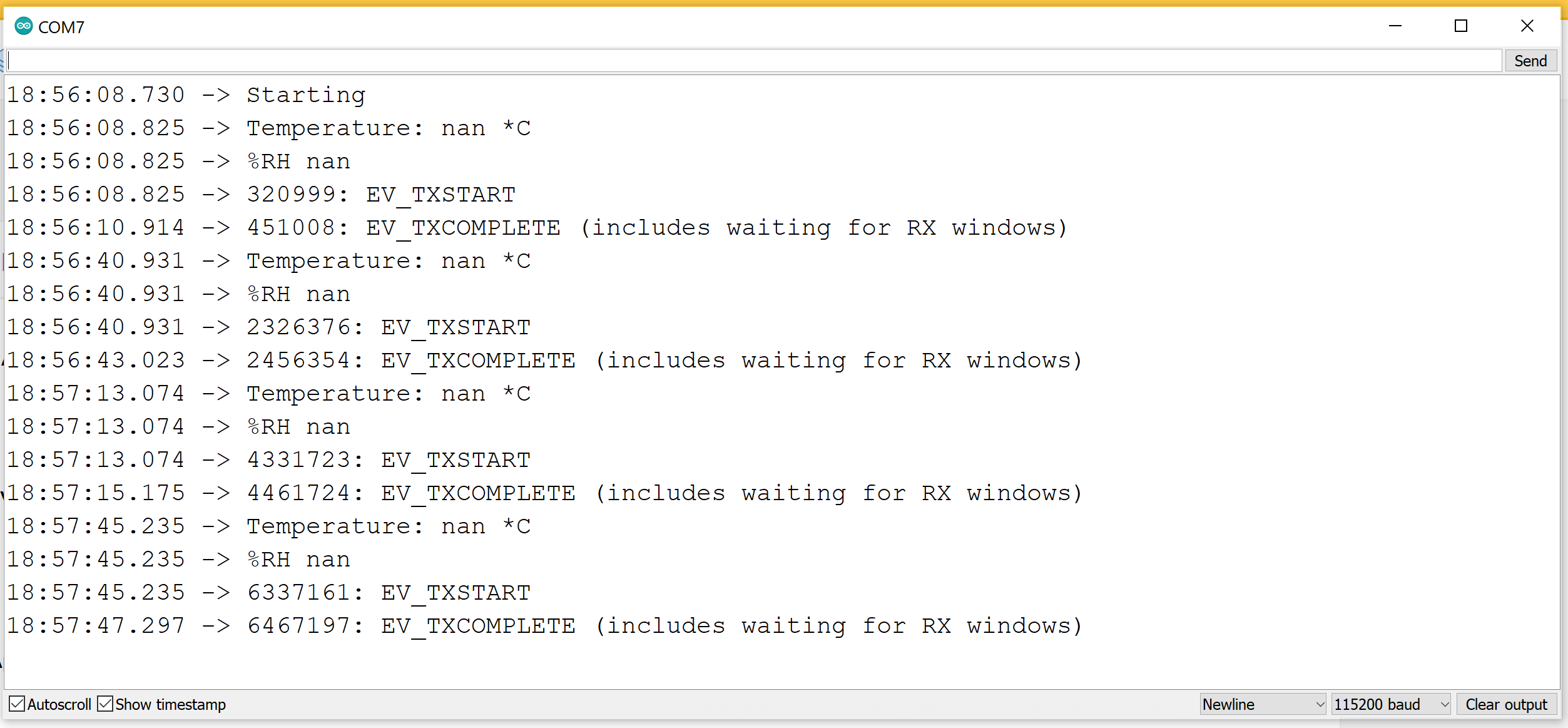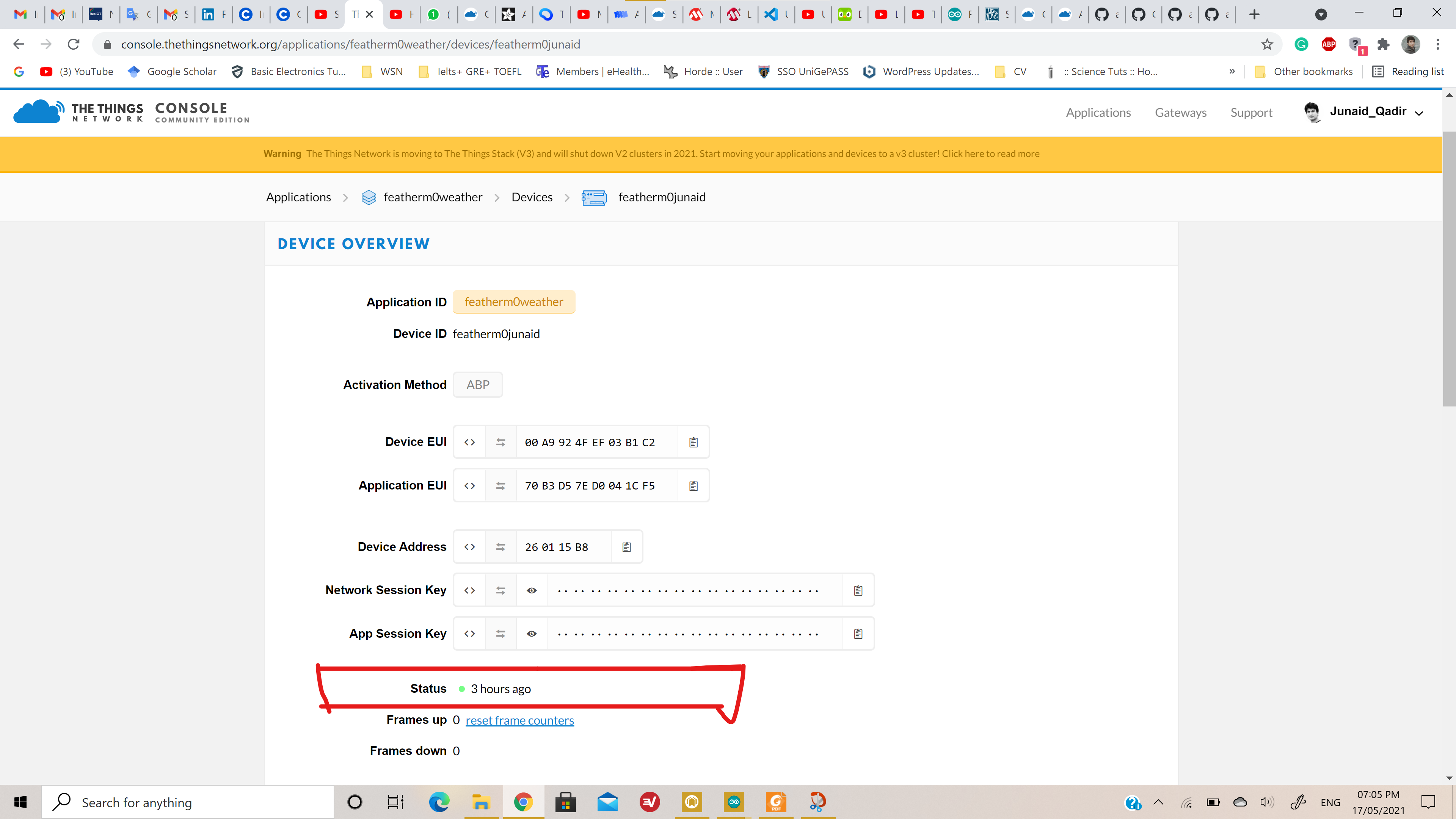Yeah, students do that, it’s an annual thing …
First hit in a popular search engine took me to that post.
Yeah, first hit in the forum search took me to that post, but no one uses Mistress Google or Master Forum Search, they get others to do it for them.
Sir if you want I can send you, I just received it from my Professor. This is the part of my Ph.D degree, first I have to connect the node then I will move to Cybersecurity of LoRaWAN.
Why can’t you post a link to the library or post the code here or put it somewhere public. Stop wriggling like a fish, if we are going to do your Ph.D work for you, at least respect our time.
Note to other readers, one of the calls to this library dumps JSON so I’m keen to know what the heck it is sending as a payload.
My dear sir, I am sorry I already posted the google drive link where the complete code and library are included. Extremely sorry I didn’t get your point where can I post the link? I am following you what you suggest me.
You haven’t made it public, which means I have to share my email address with you - make it public link. Or post the code on here.
uhhhhh I am very very sorry now I got the point. Could you please try with this new link? Please let me know if there is any problem with the link
https://drive.google.com/drive/folders/1aY8BLin8-PVVEi0HzLH9UzLtSaYYA7AU?usp=sharing
I am really sorry yesterday I sent it in hurry so was not aware of that.
LoRaWan is a topic that has many levels of understanding. I got started by looking at examples of what works in TTN. Then modifying those to do what I wanted. Then I decided I needed to understand more about what happens in the libraries used in those examples, and more about TTN and LoRaWan. I’m still a Newbie more than 2 years later.
If you have time, find a TTN example that works with your hardware, then re implement the example code you have so that it works in the TTN environment.
Then recommend you send it back! Unless he has done this to set you a challenge of debugging crap code before getting into the even more complex arena of cyber security!
You have been asked a number of questions and set a number of challenges and response requirements by the mods and other posters please give a complete ground up response as these drip feed threads take everyone’s time and are not productive.
Last night Jac challenged you on the channel selection (from with US band?) so didnt flag as he just beat me to it. Nick has now done the same. Where in the world are you? You previously used (Italian) RESiot and I see you IP address resolves to Telecom Italia…and given previous posts looks like you are using EU868… is your Dragino LPS8 a EU version and the Adafruit? Looks like your code has US content unmodified. The duty cycle called out by Nick may breach TTN FUP and potentially be illegal in EU but if origin of code/library is US based then they don’t have same DC limitation…but they have dwell time limit!
Please list source and origin of all libraries and base code then help can be effective…
Recommend start again with a clean sheet and go back to previous tutorials 
I analyzed the code and commented on the issues earlier today. Please do not duplicate this as it will only lead to confusion for the OP.
OK, to cut to the chase, use this:
which is the most up to date version of your code base, read the instructions, the Feather M0 is directly supported by this board, I use this code base and I use the Feather so there is no reason for the ‘out the box’ code not to work. Then you can add to it from there.
Plus, the SRSPacket system produces unnaturally large payloads for LoRaWAN and duplicates sequence numbers and has redundant fields. You should just use plain data structures, see https://www.thethingsnetwork.org/docs/devices/bytes/
We already have so that horse has bolted.
You may not be aware that the ArduinoUniqueId library auto-initialises itself so the OP will be overwriting his NwksKey because UniqueIDsize is populated.
Sir, is it possible for me if I insert the temperature sensing part from this code into the example code “hello world”?
As I tried last time the payload for hello world successfully received to the ttn.
File>Example>MCCI LORAWAN LMIC Library> ttn-abp
Yes, it’s just basic C programming …
Look at the examples for LMiC - one of them is for a Feather with a temperature & humidity sensor …
My first node sent “hello world”. Then I added a temperature sensor and learnt how to encode the data in binary and decode it in the TTN console.
@descartes @AndyG @Jeff-UK @kersing
Thank you so much for giving me your valuable time. I am really thankful to you.
Would you be kind enough to share the sample code with me, please? I tried integrated temperature sensor in Hello World code but still the problem persists. The serial monitor shows sensed data however can’t transmit to the ttn console.
Have you downloaded the MCCI LMiC that works perfectly with the Feather M0 with all the instructions? Did you look in the examples directory??
Dear Sir, I installed the library and tried with the ttn-abp-feather-us915-dht22 code and changed the frequency track from the US to EU in the file lmic_project_config.
Here is the serial monitor data in the snapshot below

Sir, is this a problem with the sensor? I am using MCP9700 (MCP9700 - Thermal Management - Temperature Sensors)
The ttn console still does not hear my device and no data can receive in the registered device on ttn.
